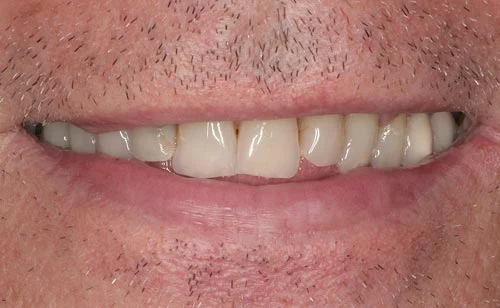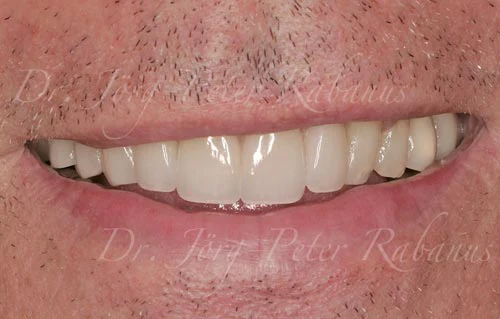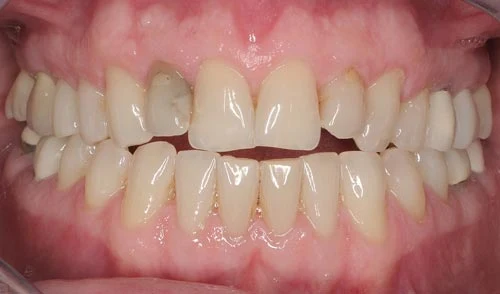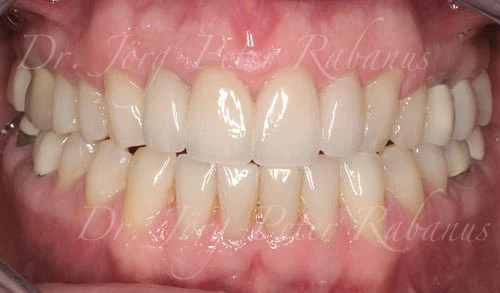Crafting a Natural Smile with Porcelain Veneers
The allure of a beautiful, natural-looking smile is universal. For patients seeking to enhance their appearance with porcelain veneers, one of the most common questions is: "Will they look natural?" Achieving a flawless yet realistic smile requires both technical skill and artistic insight. Porcelain veneers have become an indispensable tool in cosmetic dentistry for addressing aesthetic concerns, but creating a natural-looking result involves a nuanced understanding of dental anatomy and patient-specific factors.
Understanding the Characteristics of Natural Teeth
The foundation of creating natural-looking porcelain veneers lies in understanding the intricate details of natural teeth. Teeth exhibit a wide range of characteristics that vary from person to person. These include:
Hue, Chroma, and Value: These terms refer to the color properties of teeth. Hue is the basic color (e.g., white, yellow, or gray), chroma is the intensity of the color, and value is the brightness or darkness.
Opacity and Translucency: Natural teeth have areas that are opaque and areas that allow light to pass through. This interplay creates depth and a lifelike appearance.
Height-to-Width Ratio: Each tooth has a unique proportion that contributes to the harmony of the smile.
Line Angles and Surface Texture: The edges and contours of teeth influence how light reflects, enhancing their natural look.
Age also plays a significant role. Young teeth tend to have higher translucency, more defined textures, and less wear compared to older teeth. Replicating these features in veneers ensures they blend seamlessly with existing teeth and look authentic.
The Art of Smile Design
Creating a natural smile goes beyond making teeth white and shiny. Cosmetic dentistry focuses on achieving harmony between the teeth, gums, lips, and facial features. In many cases, correcting just a few teeth with porcelain veneers can significantly enhance a patient's smile and confidence.
Smile design involves careful planning and collaboration between the dentist, the patient, and skilled dental technicians. This process typically includes:
Comprehensive Evaluation: The dentist assesses the patient's dental health, facial proportions, and aesthetic goals. Photographs, X-rays, and digital scans provide valuable data for planning.
Customized Design: Using this information, the dentist creates a design that aligns with the patient’s unique features. This may involve digital simulations or wax models to visualize the final result.
Material Selection: High-quality dental porcelain mimics the optical properties of natural teeth, ensuring the veneers look lifelike.
A Minimalist Approach to Smile Enhancement
Not every case requires a full set of veneers. In some instances, addressing a few key teeth can create a transformative effect. For example, consider a patient with the following concerns:
A discolored lateral incisor due to a previous root canal treatment. Size discrepancies and minor misalignments among the front teeth.
By focusing on these specific issues, a dentist can achieve a dramatic improvement while preserving the patient’s natural dental structure. This approach underscores the principle that less can be more when it comes to cosmetic dentistry.
A Case Study in Natural Porcelain Veneers
One of our patients presented with several aesthetic concerns about his smile. The right lateral incisor had become discolored following a root canal treatment years ago. Additionally, the front teeth displayed slight size differences and alignment issues. The patient’s upper lip rested at a naturally tilted angle, but the incisal edges of the upper front teeth were level with the horizon and interpupillary line, maintaining a natural relationship with the maxilla.


The treatment plan involved designing porcelain veneers to address the patient’s specific concerns while ensuring a natural and harmonious outcome. Here’s how the process unfolded:
Initial Assessment: Photographs and digital scans were used to document the patient’s dental condition and analyze the relationship between the teeth, lips, and facial features.
Design and Preparation: The veneers were meticulously designed to match the hue, chroma, and value of the surrounding teeth. Surface texture and translucency were also customized to replicate the appearance of natural enamel.
Application and Refinement: The veneers were bonded to the teeth, and minor adjustments were made to ensure an optimal fit and alignment.
The post-operative results were remarkable. The porcelain veneers seamlessly mimicked the internal structure and texture of the neighboring teeth, creating a refreshed yet natural appearance. The patient’s smile was enhanced without compromising its authenticity.


The Role of Collaboration and Expertise
Creating natural porcelain veneers requires a team effort. Dentists work closely with dental technicians who craft the veneers with precision. Advanced technologies, such as CAD/CAM systems and 3D printing, have revolutionized veneer fabrication, enabling highly accurate and customizable results. However, the human touch remains essential for achieving artistic perfection.
Patient involvement is another critical component. Clear communication about expectations, preferences, and concerns ensures that the final outcome aligns with the patient’s vision. A successful treatment not only enhances physical appearance but also boosts self-esteem and confidence.
Beyond Aesthetics: The Functional Benefits of Veneers
While the primary goal of porcelain veneers is aesthetic improvement, they also offer functional advantages. Veneers can:
Strengthen teeth weakened by wear or minor damage.
Improve bite alignment and functionality.
Protect the underlying tooth structure from further deterioration.
These benefits make veneers a versatile solution for both cosmetic and restorative dentistry.
Achieving Timeless Beauty
The art of crafting natural porcelain veneers lies in the balance between science and artistry. By understanding the complexities of dental anatomy and tailoring each veneer to the patient’s unique features, dentists can create smiles that are not only beautiful but also natural-looking. Whether addressing a single discolored tooth or designing a full set of veneers, the goal remains the same: to enhance the smile in a way that feels authentic and timeless.
In conclusion, porcelain veneers offer a powerful tool for transforming smiles. The process demands meticulous attention to detail, advanced technology, and a deep appreciation for the individuality of each patient. When executed with precision and care, porcelain veneers can deliver stunning, natural results that stand the test of time.



